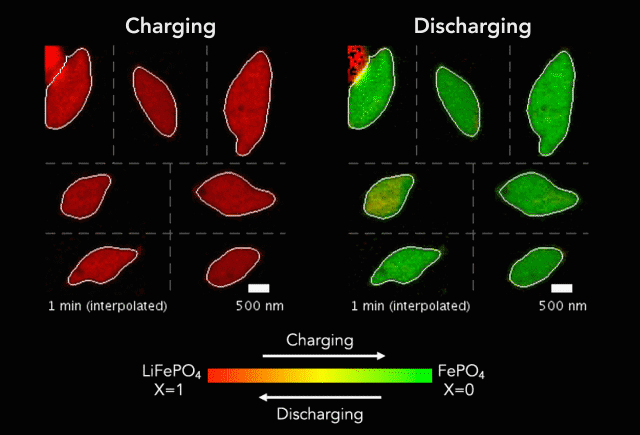A Stanford University-led team recently published research detailing how particles charge and discharge at the nanoscale, giving new insight into the fundamental functioning of batteries and opening doors for the development of better rechargeables.
This new insight into the electrochemical action that powers Li-ion batteries provides powerful knowledge into the building blocks of batteries.
“It gives us fundamental insights into how batteries work,” says Jongwoo Lim, a co-author of the study. “Previously, most studies investigated the average behavior of the whole battery. Now, we can see and understand how individual battery particles charge and discharge.”
At the heart of every Li-ion battery lies the charge/discharge process. In theory, the ions in the process insert uniformly across the surface of the particles. However, that never happens in practice. Instead, the ions get unevenly distributed, leaving inconsistencies that lead to mechanical stresses and eventually shortened battery life. One way to develop batteries with longer life spans is to understand why this phenomena happens and how to prevent it at the nanoscale.
The recently published research uses x-rays and cutting-edge microscopes to look at this process in real time.
“The phenomenon revealed by this technique, I thought would never be visualized in my lifetime. It’s quite game-changing in the battery field,” says Martin Bazant, co-author of the study.

